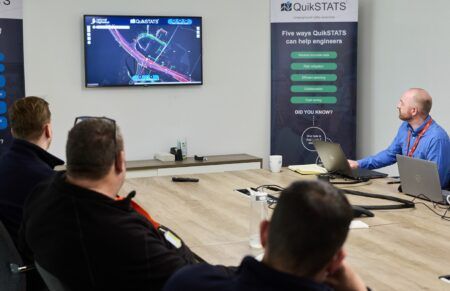Engineering and planning consultancy Michael Baker International is playing a critical role in the transformation of the heavily traveled Highway 70 between Interstate 30 and the City of Hot Springs in Arkansas.
The company recently completed a US$4.5m design project for the Arkansas State Highway and Transportation Department (AHTD) to widen the 19-mile (30.5km) stretch of highway from two lanes to four, to increase capacity and promote safety. Michael Baker conducted an environmental study, provided roadway widening design, and replaced the existing Caney Creek bridge and two bridges over Ten Mile Creek.
Since the highway runs through a mountainous area with sharp curves and elevation changes, the team was challenged to notch, widen, and correct deficiencies in curve radii and super-elevation, while still using as much of the existing pavement as possible. The design team flattened subgrade slopes on the low side of super-elevated sections to minimize ditch depths and right-of-way takes. A sharp curve at an existing intersection with the I-30 Frontage Road was unnegotiable for large trucks, so the team added a long sweeping curve that would allow trucks to safely use the intersection for turns.
The team also dealt with the Ten Mile Creek Bridge, which has historically presented environmental and flooding challenges, resulting in high maintenance costs. Bridge engineers, working in tandem with in-house hydraulic engineers, properly sized the replacement structure to allow the creek to seek its natural path without causing damage to the bridge or violating hydraulic requirements.
To facilitate continuous traffic flow, the team phased the bridge construction portion of the project, which required careful design and plan detailing to allow the structures to be built incrementally. The design phase is complete, and construction is underway, with the company providing ongoing construction support services through the anticipated completion in August 2018.
“The Highway 70 corridor has experienced a number of fatal accidents, so our design efforts looked at ways to improve roadway conditions, such as straightening curves, flattening hills and changing geometrics of the highway,” said Michael Stengel, VP and office executive for Michael Baker’s Little Rock branch.
“Utilizing 3D-modeling software, our team developed innovative and environmentally-sound solutions for our partners at AHTD to improve the existing roadway and bridges. Our team looked beyond the present needs of the project to incorporate grading for a future bike path, and utilized a portion of an abandoned railroad embankment in the design.”




